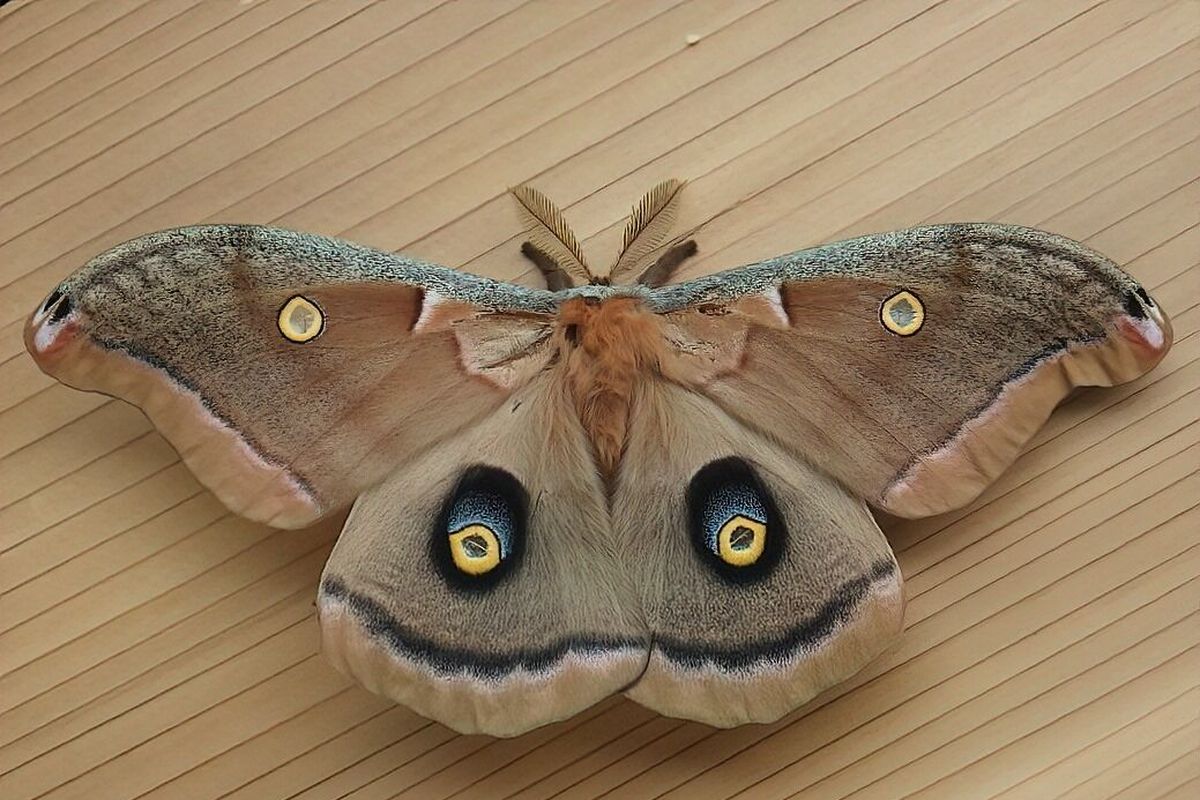Cool moths found in Spokane and around the world
Known as one of the largest and most beautiful moths in North America, the polyphemus moth can be found throughout much of of the U.S. It’s named after Polyphemus, the cyclops from Greek mythology, due to the eye-like markings on its wings. The eyes may be a defense mechanism, an attempt to deter predators. (Courtesy of Carl Barrentine)
Moths in Spokane
Polyphemus moth (Antheraea polyphemus)
Known as one of the largest and most beautiful moths in North America, the polyphemus moth can be found throughout most of the country. It’s named after Polyphemus, the cyclops from Greek mythology, due to the eye-like markings on its wings. The eyes may be a defense mechanism, designed to deter predators.
Wavy-lined emerald (Synchlora aerata)
Roughly the size of a quarter, the wavy-lined emerald is found throughout much of America. Not all moths are the drab browns and grays that accumulate in upturned lampshades.

Yarrow plume moth (Gillmeria pallidactyla)
To the uninitiated, plume moths don’t look like moths at all.

Moths elsewhere
Luna moth (Actias luna)
Few American moths can match the luna moth for raw beauty. Lunas, relatively common on the East Coast, are light green behemoths. They measure about 5 inches across and sport twin tails at the bottom of their wings, giving them a vaguely kite-like appearance. While they’ve always been among the best-known moths, they had a bit of a moment in the mid-2000s when a luna moth appeared as the animated mascot for Lunesta, a prescription sleeping medication.
Madagascan sunset moth (Chrysiridia rhipheus)
Found only in Madagascar, many consider the sunset moth the world’s most gorgeous insect. Its wings look like what you’d get if someone spilled a bottle of black ink on a rainbow. The moth is so pretty that people capture it, chloroform it to death, stick it in display cases and sell it throughout the world as a display piece.
Death’s-head hawk moth (Genus Acherontia)
The name “death’s-head hawk moth” refers to three similar species, found in Africa, Europe and Asia. The pattern on the back of the moths’ heads bears an uncanny resemblance to a drawing of a human skull. The moths are well known as Buffalo Bill’s calling card in “The Silence of the Lambs,” a psychological horror film that won Best Picture at the 1991 Academy Awards. A death’s-head hawk moth appeared front and center on the movie’s original promotional poster.
Spongy moth (Lymantria dispar dispar)
The spongy moth is an invasive species in the U.S. that causes enormous ecological and economic havoc, primarily by damaging and killing trees. Formerly known as the gypsy moth, the Entomological Society of America renamed it in 2021.
Micromoths (various species)
The term micromoth doesn’t refer to any particular family or species. Rather, lepidopterists use the term when referring to the thousands of moths that are so small they can often only be identified under a microscope or by dissection. Many micromoths lack scientific names and remain unknown to science. Carl Barrentine, an expert on Inland Northwest moths, doesn’t bother trying to identify micromoths and doesn’t intend to start trying anytime soon. “The people that work on moths that are 4 and 5 millimeters long – that crowd’s weird,” Barrentine said.

